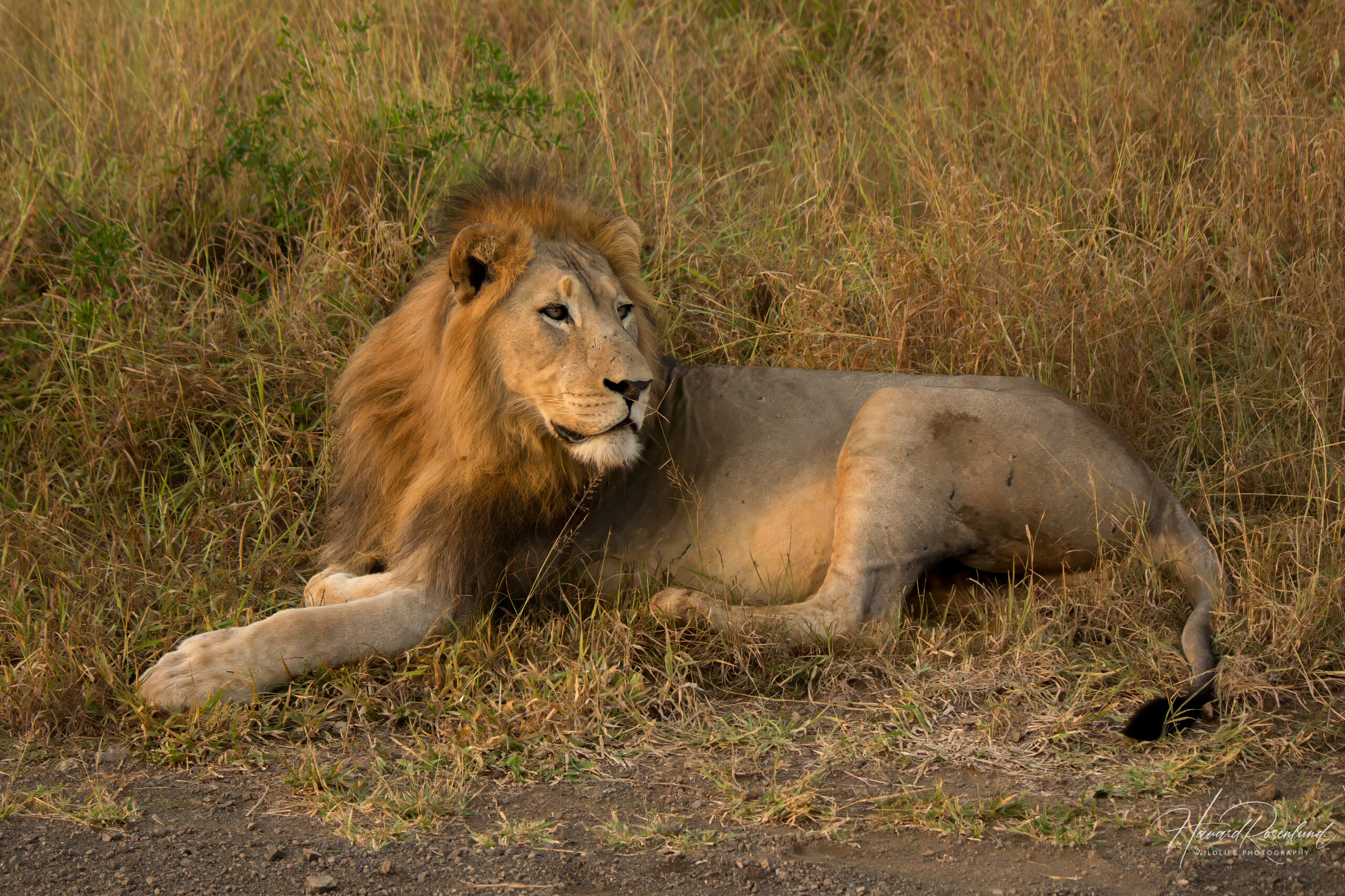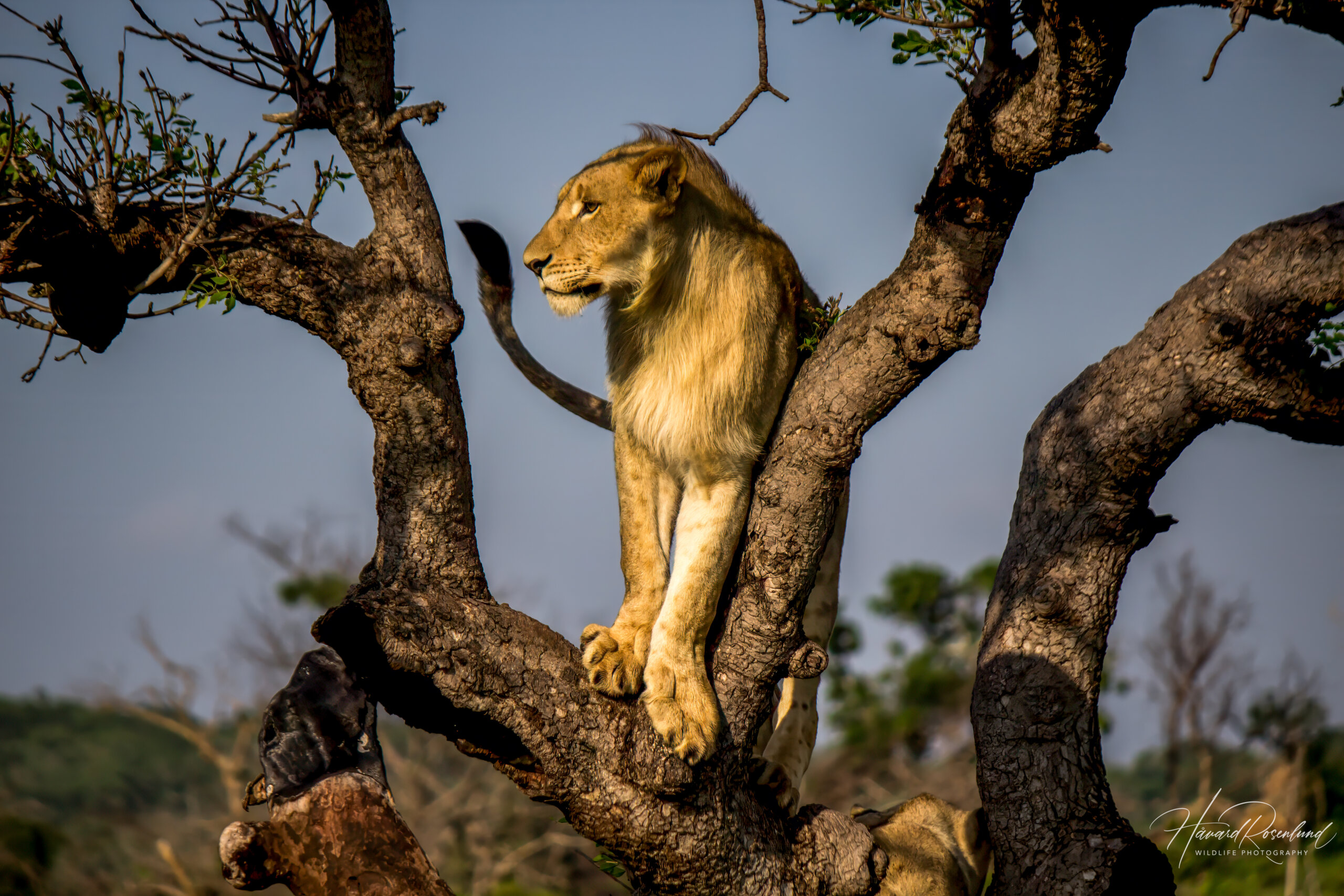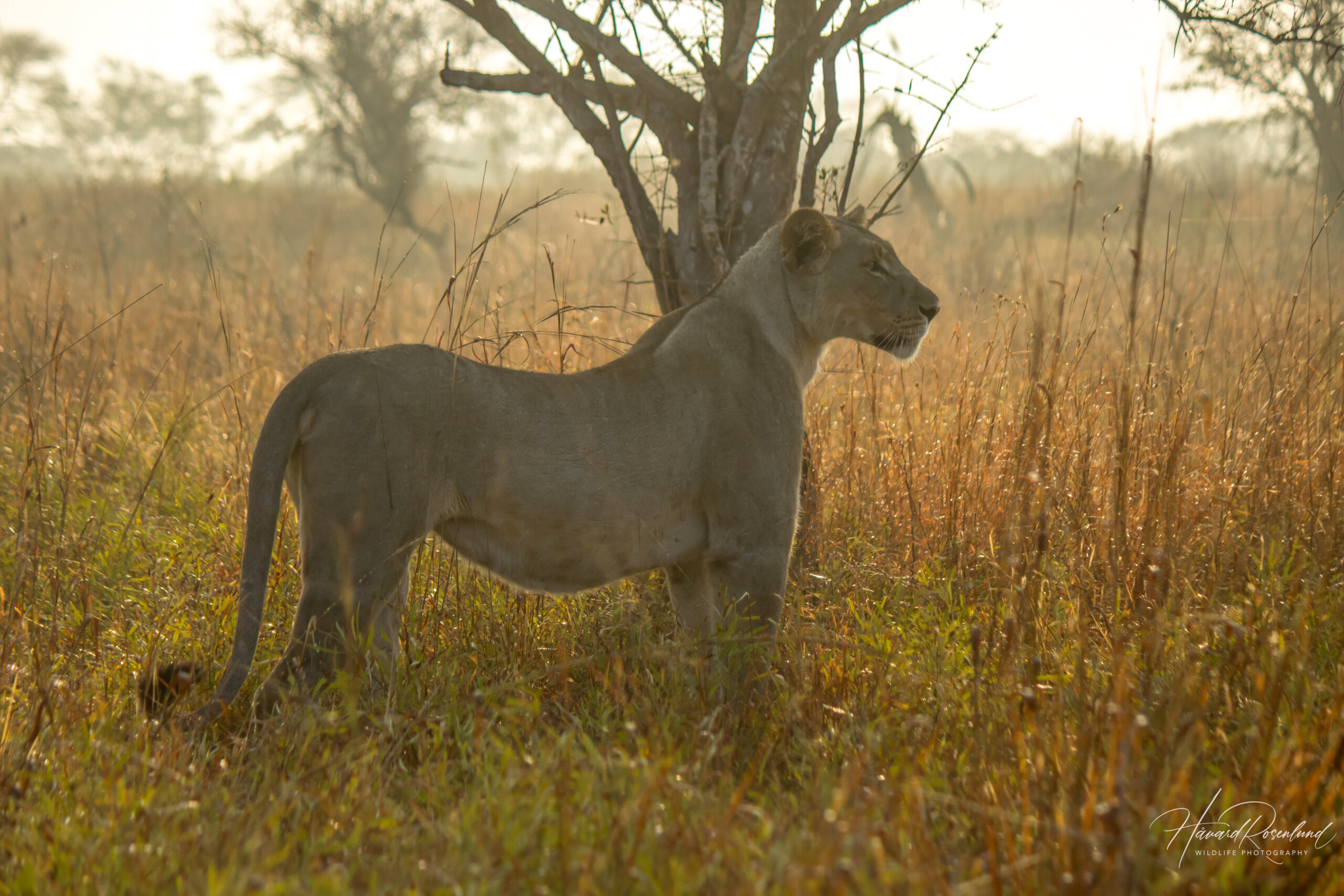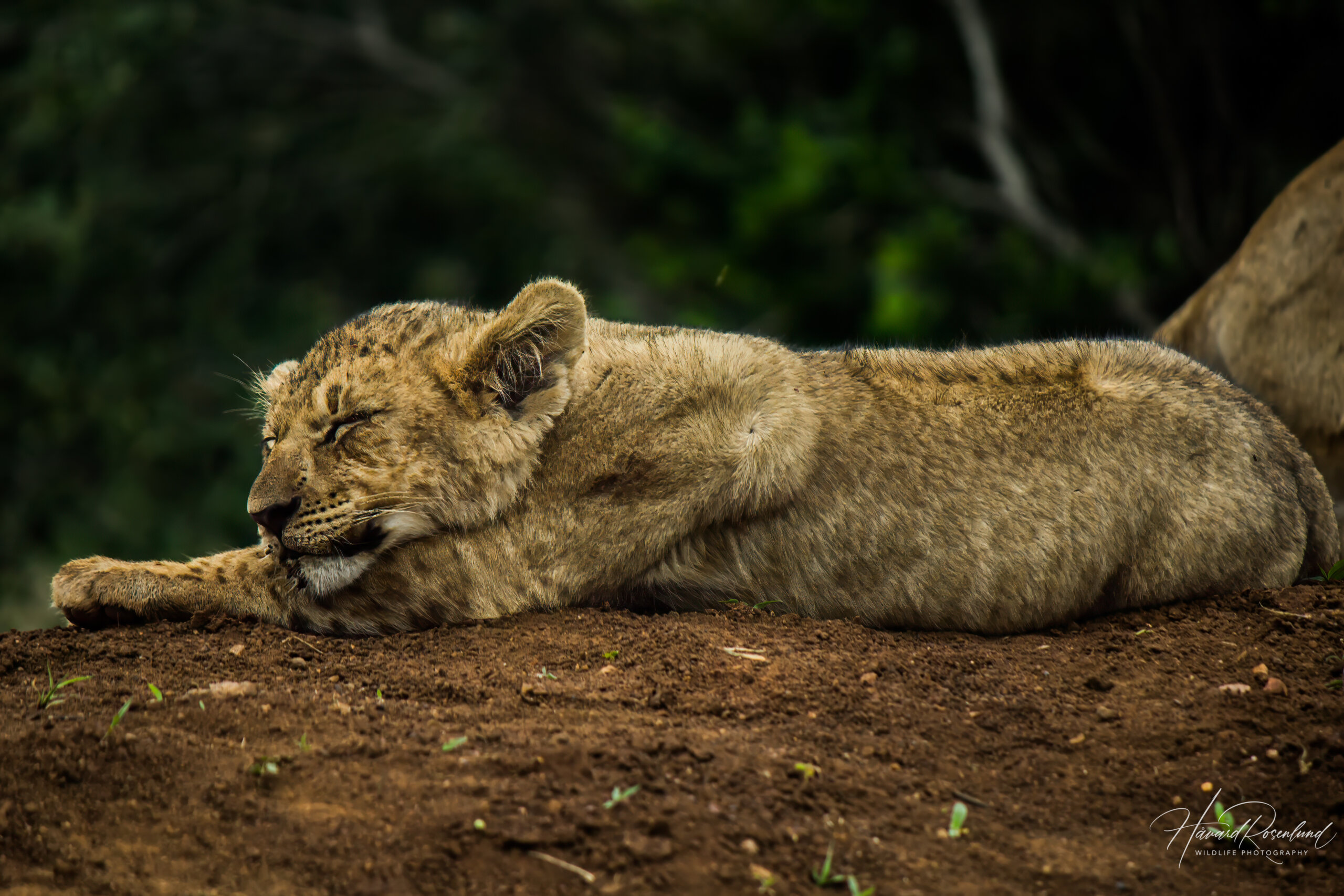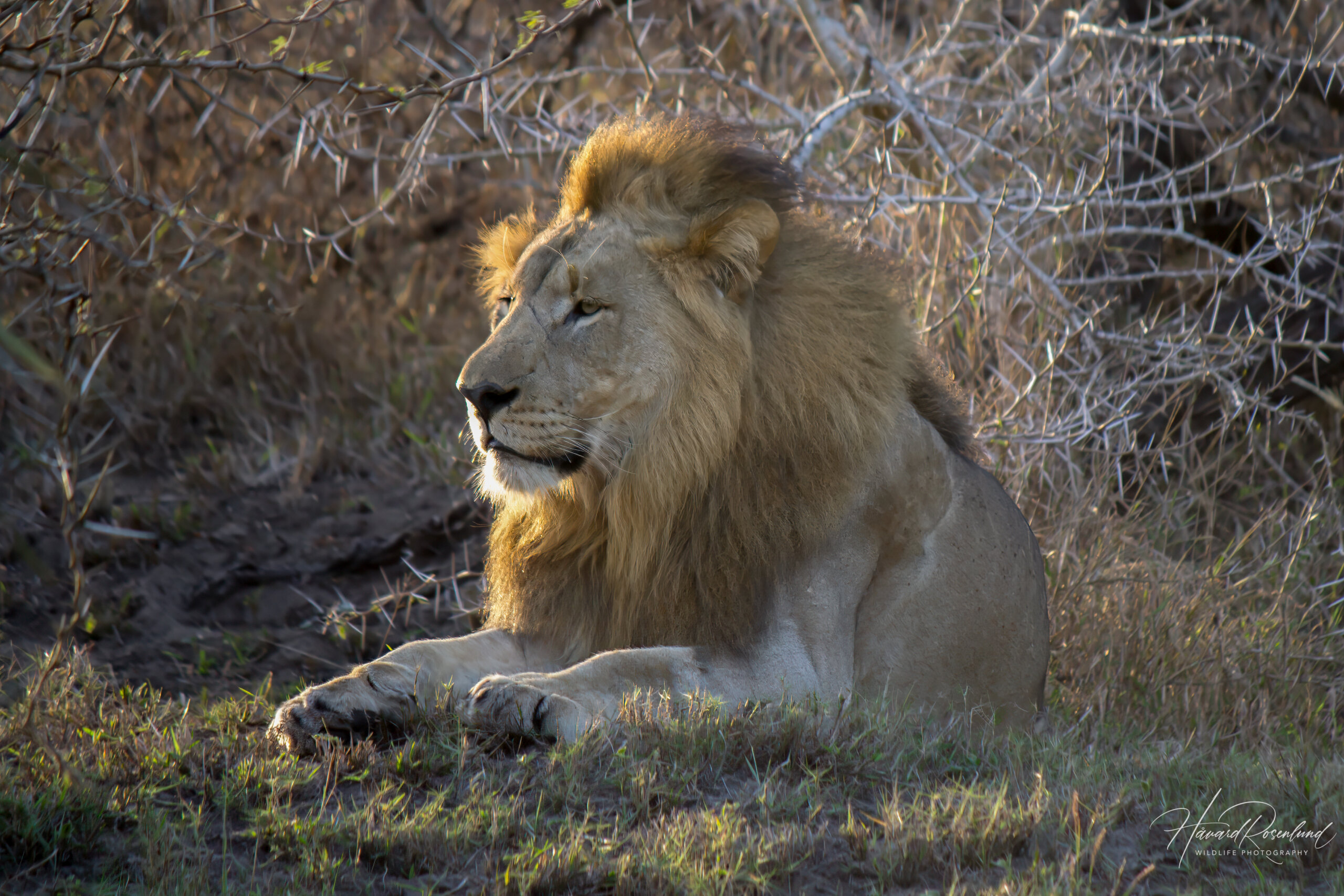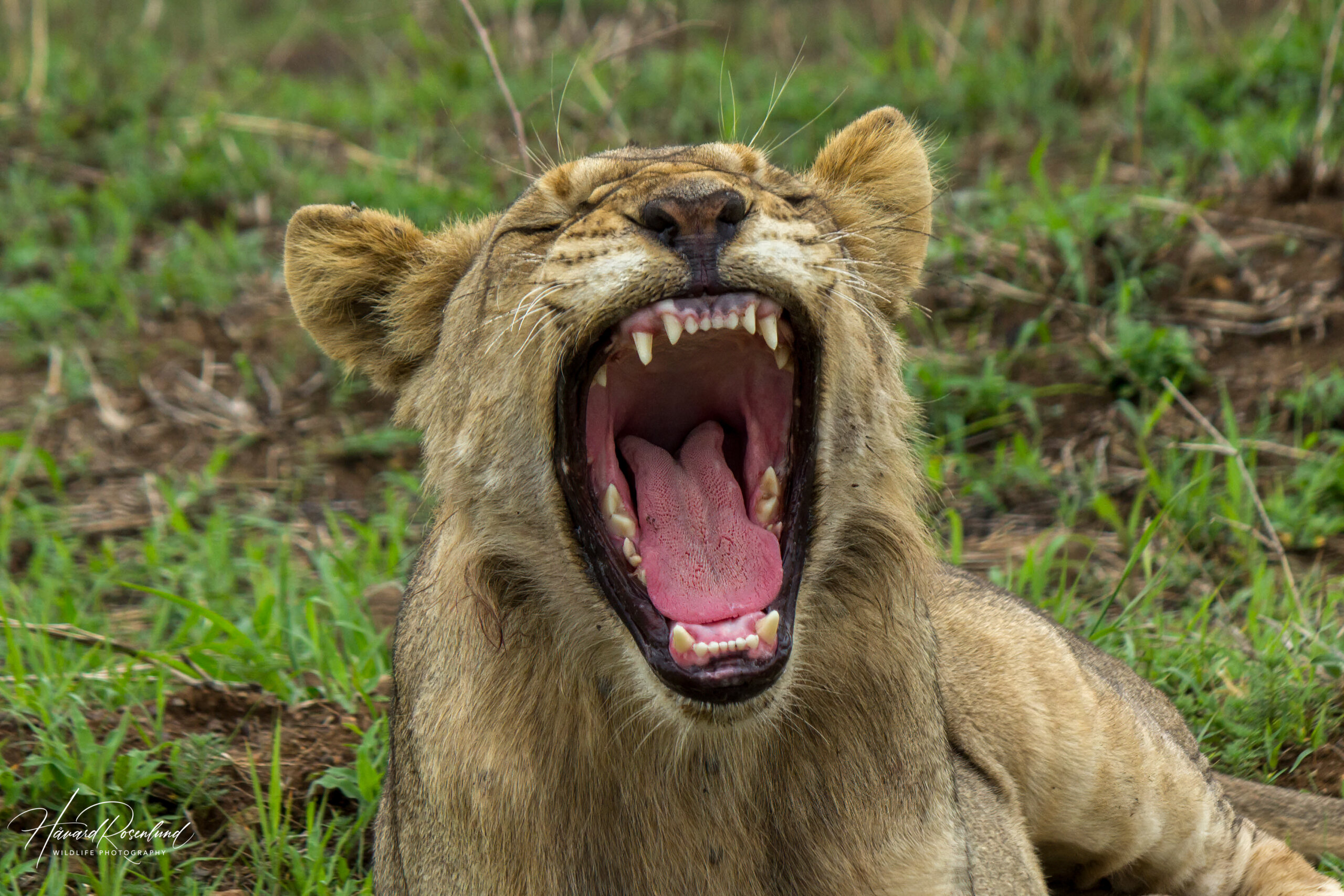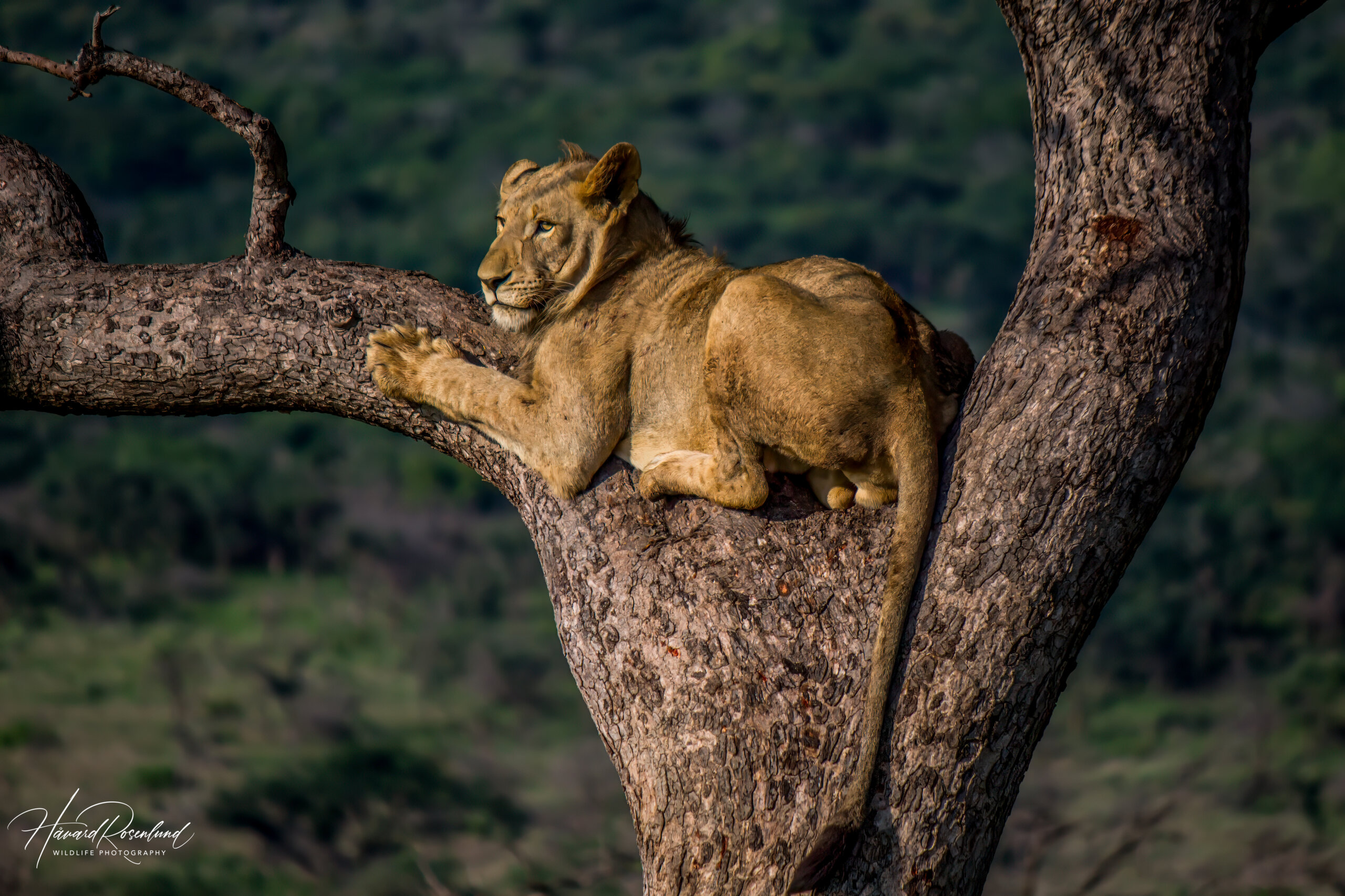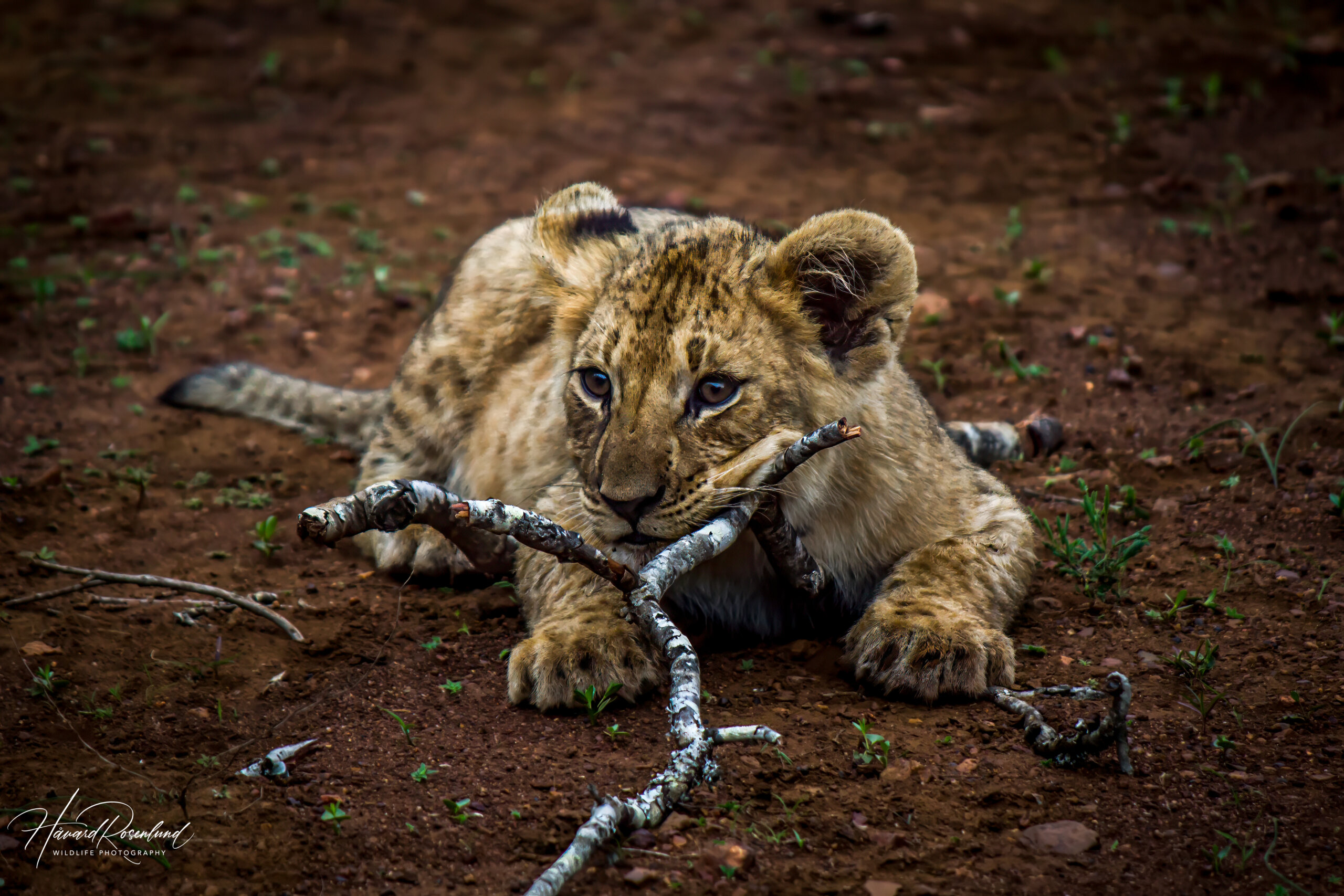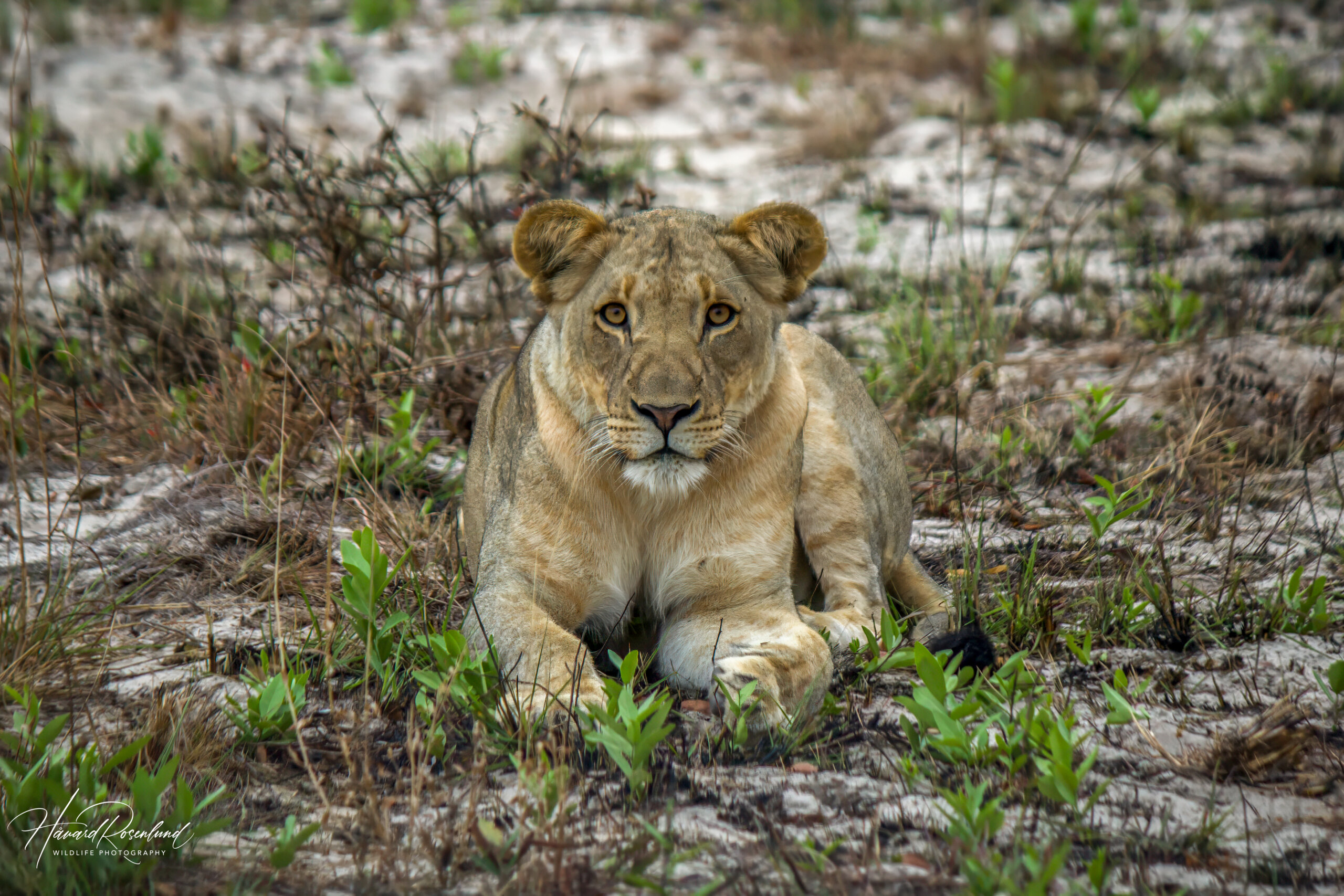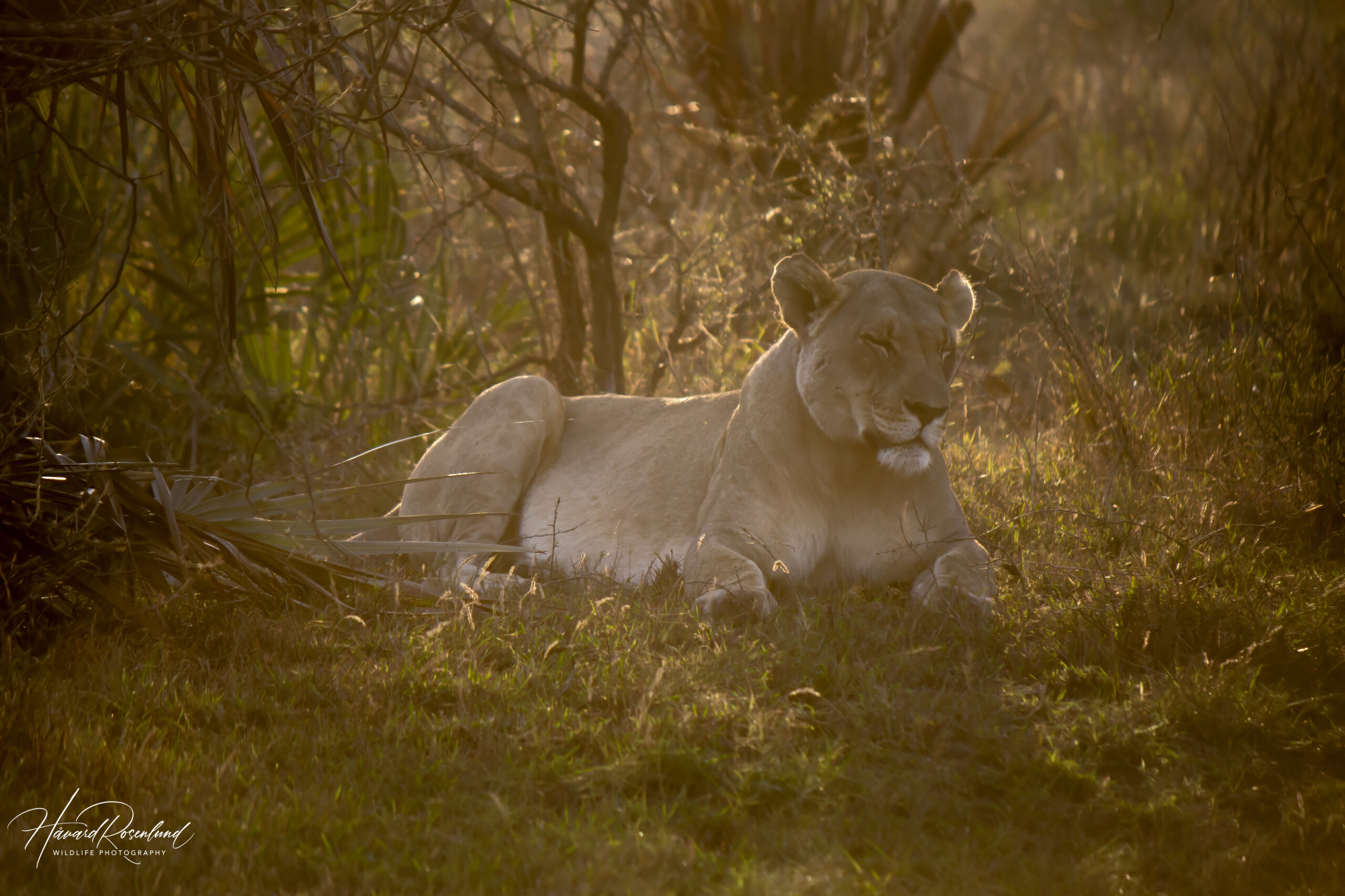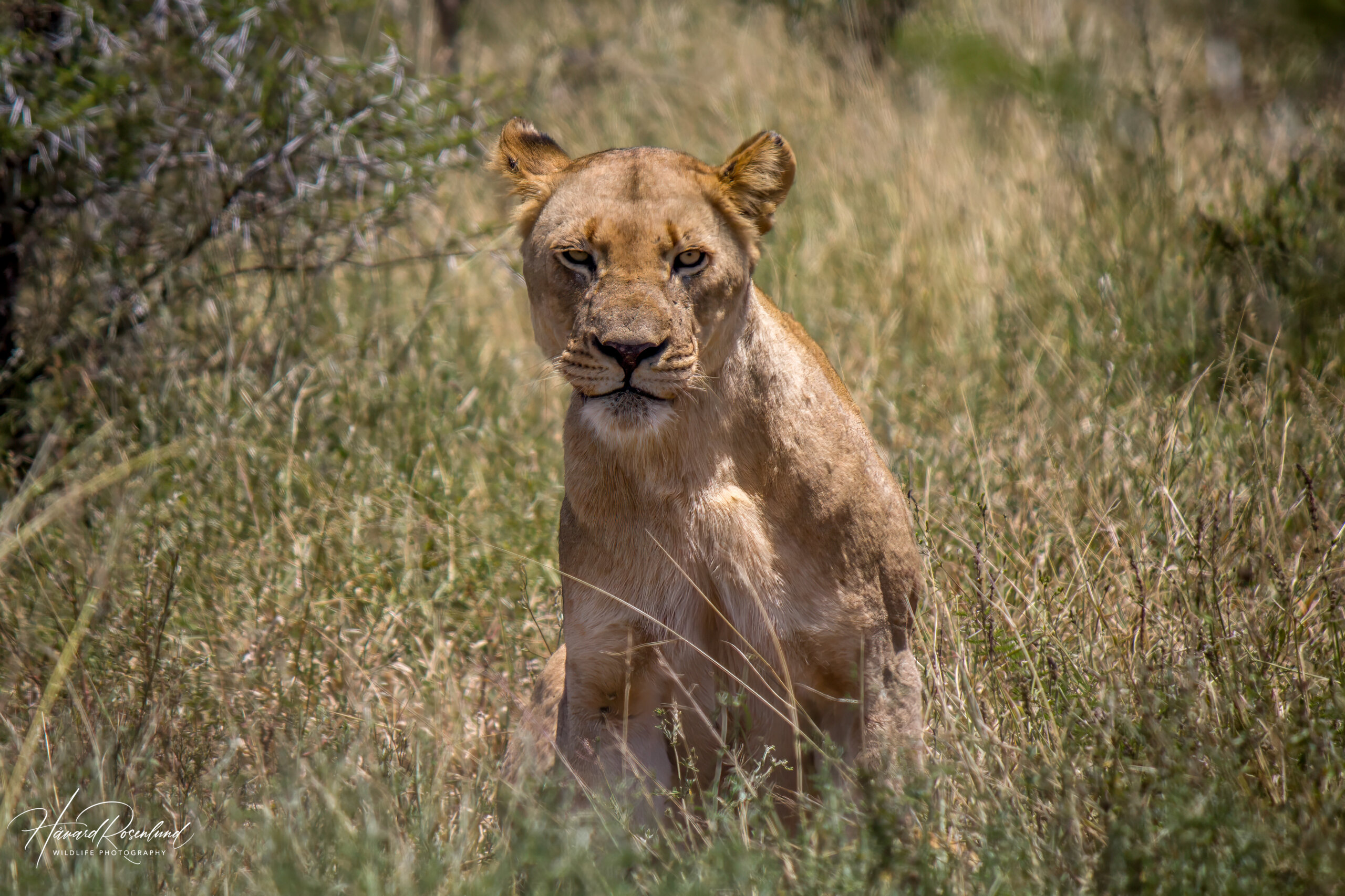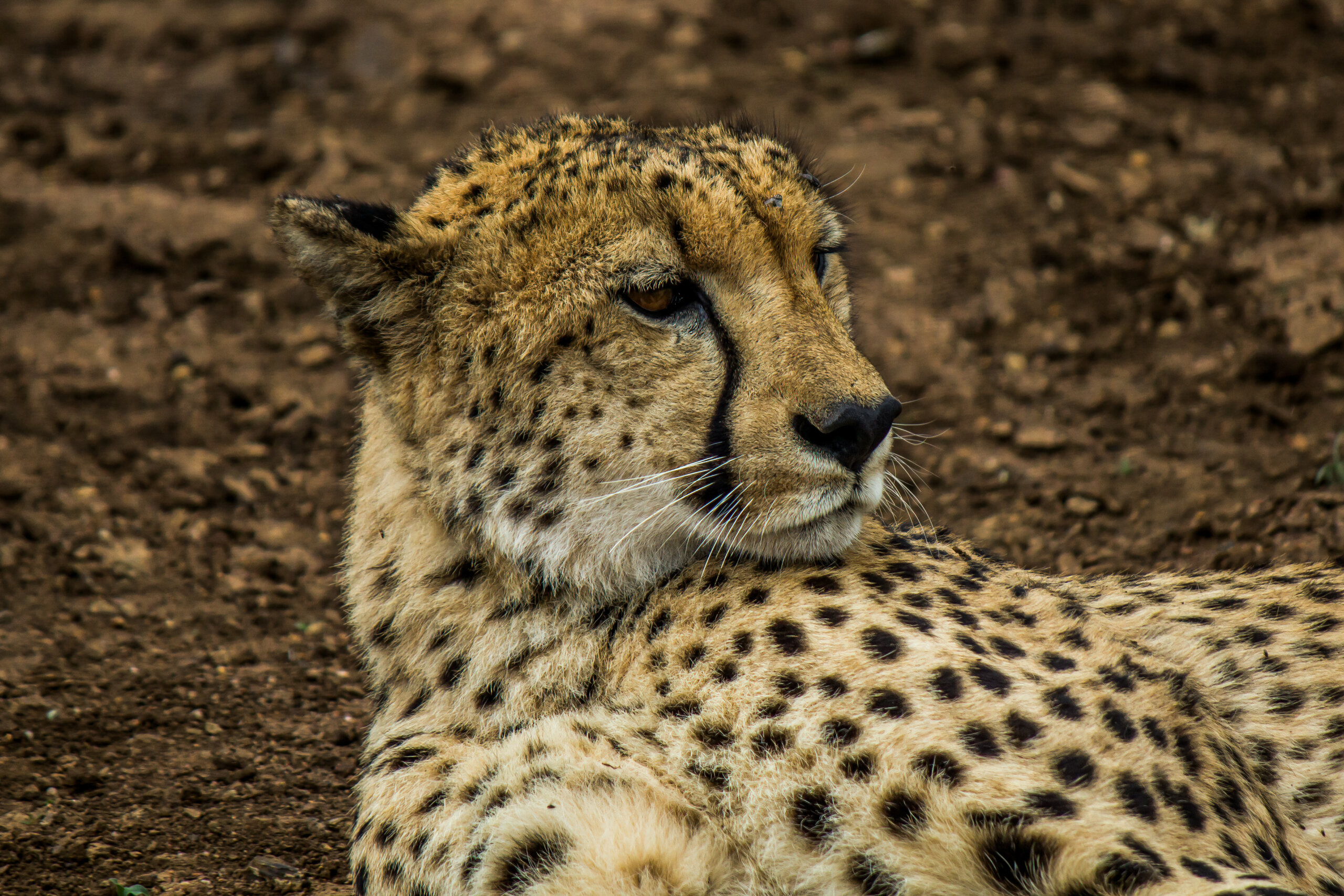Description
The lion (Panthera leo) is the second largest cat in the world after the tiger (Panthera tigris) and is the largest cat on the African continent. A male lion can reach weights up to 250 kg (550 lb.), with 180-190 kg (396-418 lb) being more common. Females are smaller with weights reaching 120-130 kg (264-286 lb.). A male lion typically reaches 1.2 m (4 ft) at the shoulder. In contrast to other big cat species, the lion has no pattern on its body, such as spots or stripes. Cubs are born with some spots, but they fade away as they age on most lions. Males also have manes of varying sizes, which helps distinguish them from females. In a few places, like Tsavo in Kenya, male lions are known to not grow manes.
Social behavior
Lion is the only cat that live socially structured lives. A family group is called a pride and related females, along with their young, will make up the core of this group. Male lions need to earn their place in a pride by showing dominance and strength. Even if a pride is without a male, it is not a given that the females will allow the first male that shows up into their pride, and they may even chase him away if he is deemed undesirable. A young male born within the pride will be forced out when reaching an age of about 2-3 years under normal circumstances. Male lions normally get to take over a pride when they reach their prime at about 5 years of age. They normally do so by fighting off the resident males. A male lion will often stay with a pride no longer than 3 years before being kicked out by younger and stronger individuals. Male lions often die at around the age of 10 due to sustained fighting and injuries. Females generally live longer, and often get to reach an age between 12 to 14 years.
In the absence of a dominant male younger males reach prime at an earlier stage. They will grow to full size faster, and their mane will grow at an accelerated rate and it might become noticeably darker. A large and dark mane is a sign of good health, strength and dominance, and females will quite often choose the male with the fullest and darkest mane. To increase their chances of taking over prides males often form coalitions with brothers. Because brothers share the same genes one will often allow the other to have the mating rights. When holding a territory, a male will regularly roar to state his presence, as well as patrol and scent mark with urine, as can be seen in the video below.

Hunting & feeding habits
Lions are well known African hunters, but they are actually not very successful at hunting. Only one hunt out of three succeeds when hunting as a group, and only one out of six when hunting alone. A pack of African wild dogs is successful in eight out of ten of their hunts for comparison. This makes lions prone to scavenge and they will not hesitate to steal prey from other predators, such as leopard, hyena, wild dog and cheetah.
Because lions live in larger family groups, they need to feed on large prey to sustain the pride. Average weight for prey is 126 kg (278 lb.) and wildebeest, zebra, buffalo, and warthog are often preferred species. In Kruger National Park, seeing lions hunt adult giraffe is not uncommon, though large specimens are often avoided due to risk of injury. Prides are often specialized at hunting certain prey species and a few prides are even specialized at taking down young elephants. Although male lions can hunt, females are better equipped by being smaller, faster, more agile, as well as having no cumbersome mane. When going for larger and tougher prey, male lions often join the hunt to help finish the kill by using their strength. Different prides can hunt in different ways and individual females often have different roles to play in the hunt.
I once got to follow a pride of lions as they planned and executed a hunt on a herd of wildebeest. It started out with the females slowly approaching the herd. When they got to within a hundred meters of the wildebeest they laid down flat in the grass and hid. As this happened one of the older females had sneaked past us and walked around our car to approach the wildebeest from behind, having the wind blow her scent towards them. In the video below you will see how this caused the wildebeest to run straight into a trap. It is a little shaky, due to a very excited camera operator, but you can clearly see what is going on. Beware of strong language in the video, as we all got quite worked up and excited when this was happening.

When small cubs are present in a pride the mother often hides away the cubs before hunting. After a successful hunt she will leave the kill to fetch the cubs. If old enough to eat meat, the other lions will open some of the more tender parts of the prey for the cubs, such as the area around the anus, as has been done in the video below. The cubs in the video are about 4-5 months old, and still suckling. This was the first time they were observed eating meat. The wildebeest being fed on here is the same as the one caught in the video above.

Reproduction
Lions can breed throughout the year, and a male lion taking over a pride will kill any cubs sired by the previous male to get the females ready to mate. A male and a female will copulate twenty to forty times a day for several days in an effort to impregnate her. Gestation will then last for a period of about 110 days. As the time of birth gets close, the lioness will find a secluded and sheltered den away from the pride to give birth. She will continue to spend time away from the pride after birth with the cubs. It can take a few weeks to a couple of months before introducing the cubs to her pride.
Status & subspecies
The number of lions in the wild is decreasing, and it is estimated to be approximately 20,000 individuals left in Africa. It is listed as vulnerable on the IUCN Red List.
Until recently the lion was believed to be separated into an African subspecies and an Asian subspecies, but recent genetic studies have concluded that the Asian lions, which live exclusively in and around the Gir Forest Reserve in the state of Gujarat in India, is very close to the lions found in West and Northern Africa. The lion is now split into the subspecies northern lion (P. l. leo) and the southern lion (P. l. melanochaita). The northern lion encompasses the Asian lions in India and the lions of Western and Northern Africa, including the extinct Barbary lion, which once was found in southern Europe and north of the Sahara in Africa. The southern lion is the most numerous one and is found across East and Southern Africa.
The northern lion is more endangered than the southern lion, with low numbers in most populations. The IUCN has assessed the West African lion and the Asian lion separately (will probably be revised in the future). The West African lion is believed to number fewer than 250 mature individuals and is listed as critically endangered. The Asian lion is doing better and has seen numbers increase steadily, with more than 600 individuals now living in India. It is listed as endangered. There is not much room for continued growth in the Gir Forest lion population, and a relocation of animals to other parts of India will be beneficial for the continued survival of the subspecies.
Threats
The lion populations of Africa are declining throughout most of its range due to indiscriminate killing by humans, diseases, and habitat loss. The West African lions are especially vulnerable as they are totally isolated, are few in numbers and confined to just a few protected areas. In areas outside of protected reserves conflicts with humans are quite common. Lions often kill livestock, and in some areas, such as rural southern Tanzania and northern Mozambique, lions are specialized in hunting humans as other prey is scarce. Although they are feared in these areas, lions are respected and revered and the local population is often against retaliatory killing, even when loosing family and friends. The same cannot be said for other areas, even where lions have much less of a direct impact on human lives.
Wild lions are doing quite well in South Africa, and with an increase in private nature reserves there has been a sharp increase in places to see wild lions. All these areas are fenced, and several cannot support large populations. Gene flow is done through management by swapping animals between reserves. Because of the availability of lions on the market from reserves and breeders in this country there has been an increase in trophy hunting practices as well. Especially the canned hunting industry benefited greatly from this, giving rise to much controversy. Canned hunting businesses keep lions for breeding purposes in what can be described as a caged lion farm. Rich tourists will then come and pay to hunt one of these animals. It will be set free in an enclosed area and “hunted” by whoever wants to pay. This practice is now illegal in South Africa but has been difficult to abolish altogether.








